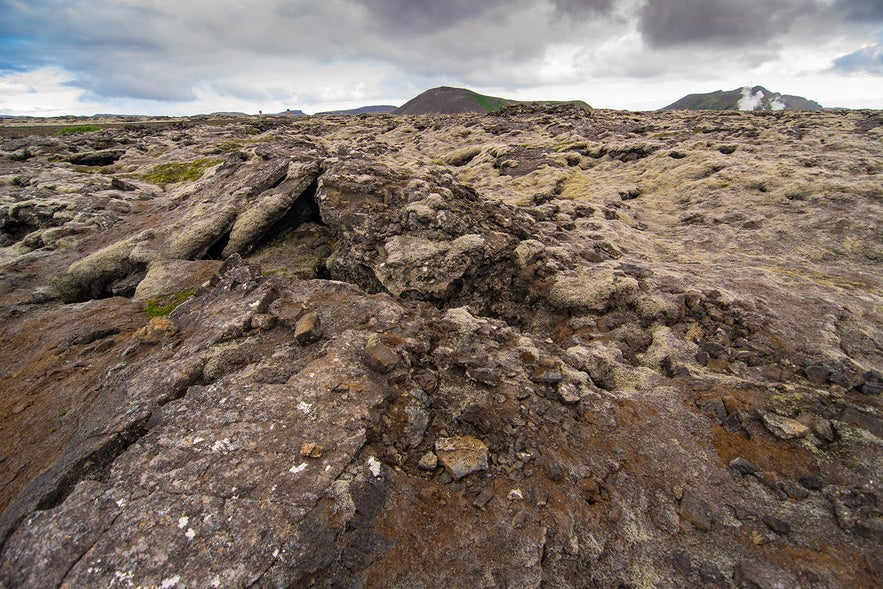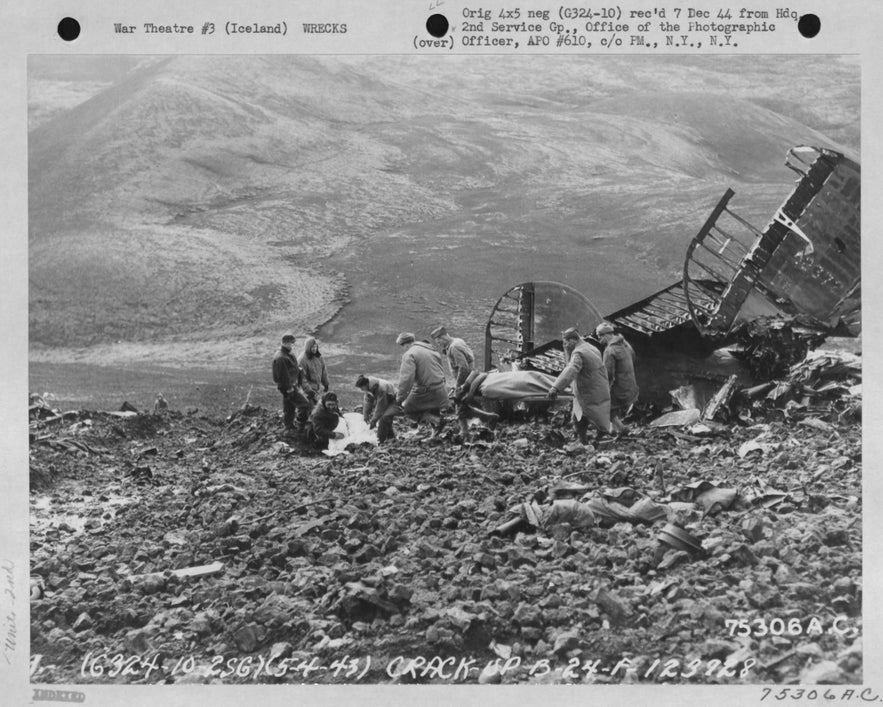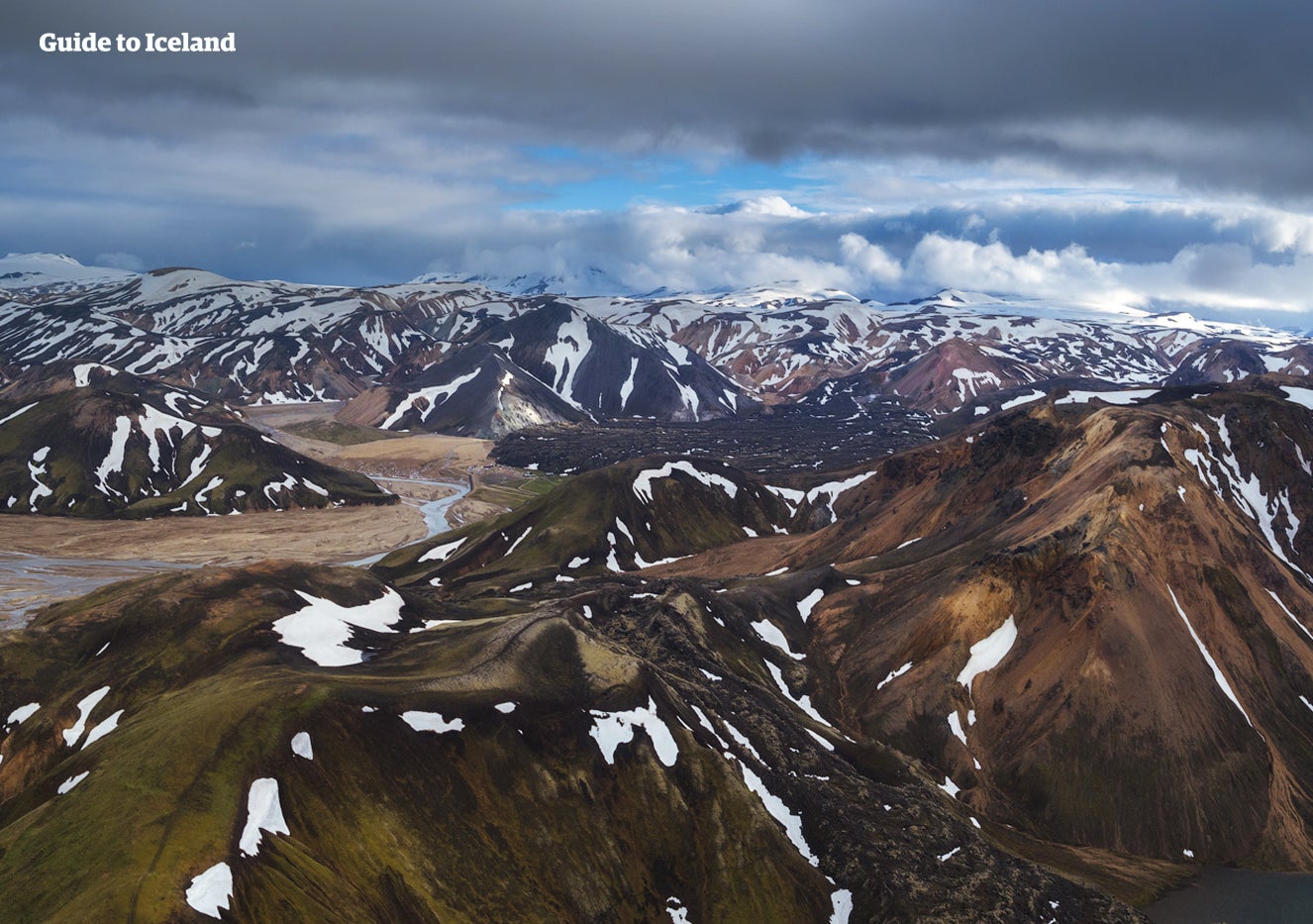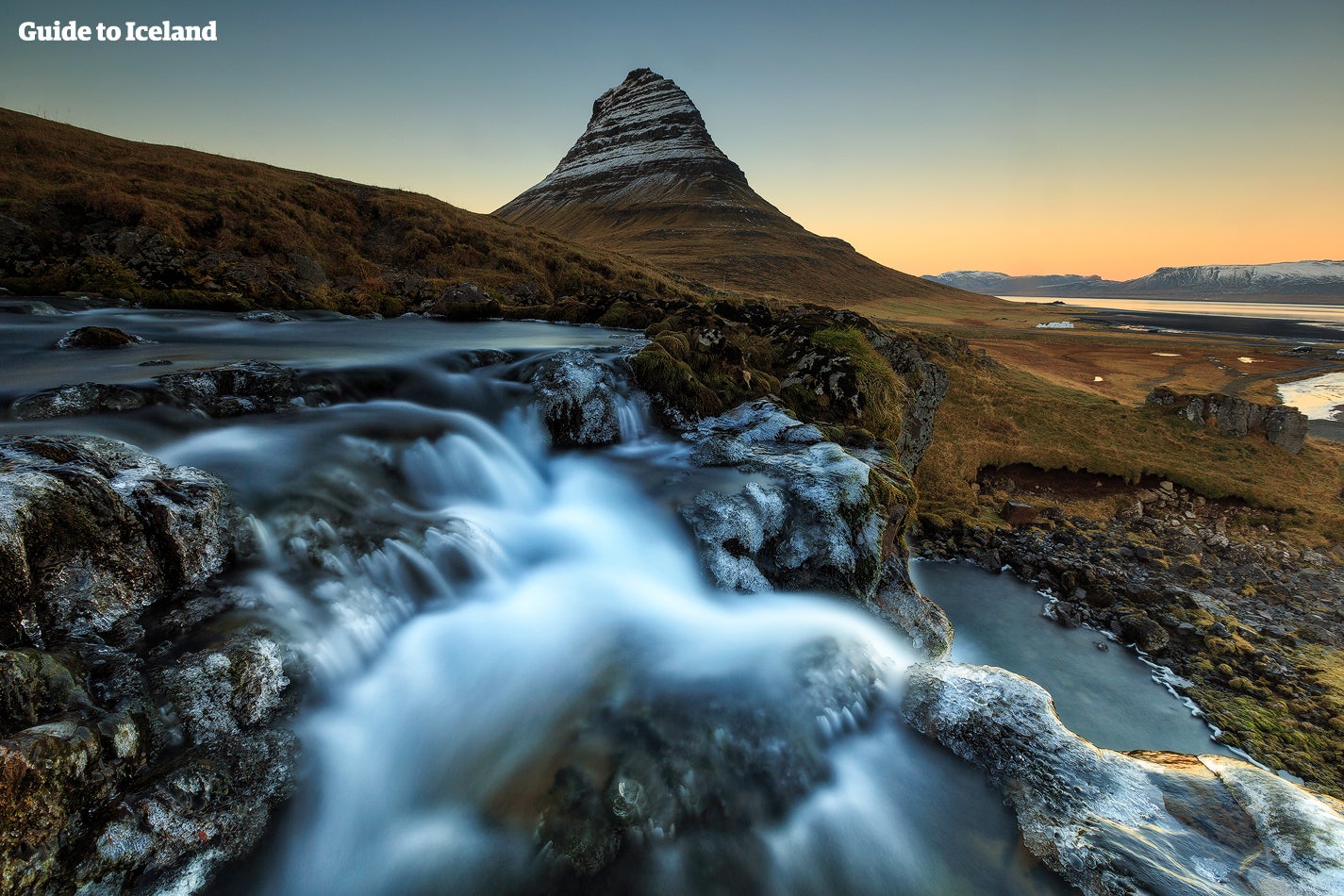
Learn everything you need to know about the Fagradalsfjall Volcano and its eruption in Iceland! How strong was the eruption? Can you visit the volcano now? How do you get there? Was the eruption dangerous? How long did it last, and will it erupt again? In this article, you'll find breathtaking photos, fascinating facts, and all you need to know about one of the most recent eruptions in the Land of Ice and FIRE!
It didn't take long for Iceland to remind the world of its volcanic power. Just 10 months after the Fagradalsfjall eruption of 2021 ended, the volcano erupted yet again, and in 2023, the area erupted two times, at Mt. Litli-Hrutur in July and at the Sundhnukagigar craters in December! In January 2024, the fifth eruption started this time by the Hagafell mountain, with more eruptions throughout the year in Sundhnukagigar.
Why You Can Trust Our Content
Guide to Iceland is the most trusted travel platform in Iceland, helping millions of visitors each year. All our content is written and reviewed by local experts who are deeply familiar with Iceland. You can count on us for accurate, up-to-date, and trustworthy travel advice.
Because of the recent 2024 and 2025 Sundhnukagigar eruptions, the whole area is currently closed off for safety. The only way to see the Reykjanes eruption area is with this helicopter tour of the volcano area.
If you are looking to explore the many other volcanoes in the country, rent a car in Iceland to get around easily. There are also many volcano tours available, with an expert guide leading the way. Fagradalsfjall volcano is located near Iceland's capital, so it's easy to visit if you book a room in Reykjavik.
- Learn more with the Guide to the 2024 and 2025 Sundhnukagigar Volcanic Eruptions
- See more: Complete Guide to the 2023 Sundhnukagigar Volcanic Eruption
- See also: Complete Guide to the 2023 Eruption of Litli-Hrutur Volcano
- Read about the 2021 Volcanic Eruption of Fagradalsfjall Volcano
Fagradalsfjall Volcano Eruptions
 Fagradalsfjall Volcano has become one of Iceland’s most iconic natural landmarks, captivating visitors with its dramatic eruptions. This active volcano caught the world’s attention with its spectacular eruptions in 2021 and 2022. In this section, both eruptions will be explored, highlighting their key events, what made each one unique, and the ongoing volcanic activity in the region.
Fagradalsfjall Volcano has become one of Iceland’s most iconic natural landmarks, captivating visitors with its dramatic eruptions. This active volcano caught the world’s attention with its spectacular eruptions in 2021 and 2022. In this section, both eruptions will be explored, highlighting their key events, what made each one unique, and the ongoing volcanic activity in the region.
2022 Eruption of Fagradalsfjall Volcano
The location of the 2022 Fagradalsfjall eruption made it very exciting for people who wanted to witness it up close. All visitors to Iceland are at least somewhat familiar with Reykjanes Peninsula, as it is the location of Iceland's only international airport.
Travelers tend to drive straight from the airport to the capital city and may notice the lunar-like landscape outside their car window, not realizing the volcanic power lurking underneath.
 Compared to most of Iceland's volcanic eruptions, which usually take place way up in the remote Highlands or deep under the dense ice of glaciers, the Fagradalsfjall volcano is fairly accessible for anyone near Reykjavik.
Compared to most of Iceland's volcanic eruptions, which usually take place way up in the remote Highlands or deep under the dense ice of glaciers, the Fagradalsfjall volcano is fairly accessible for anyone near Reykjavik.
Read on for answers to all your questions and more in this Complete Guide to the 2022 Fagradalsfjall volcanic eruption in Iceland.
- Discover what Iceland's volcanic landscape has to offer with these Volcano Tours
- Learn more about volcanoes with the Ultimate Guide to Volcanoes in Iceland
On August 3rd, 2022, the Fagradalsfjall Volcano on the Reykjanes Peninsula erupted. Weeks of earthquakes preceded the event, with the strongest tremors measuring above 5.0 on the Richter scale. Fortunately, no significant injuries or property damage were reported. However, geologists warned that a volcanic eruption was only a matter of time.
 Those predictions eventually came true when a 300-meter-long volcanic fissure opened up in Meradalir valley on August 3rd, gushing out 20-50 square meters of lava per second. The eruption site was about 0.6 miles (1 kilometer) away from the 2021 volcanic eruption in Geldingadalur valley, and 2.5 miles (4 kilometers) from Mt. Litli-Hrutur.
Those predictions eventually came true when a 300-meter-long volcanic fissure opened up in Meradalir valley on August 3rd, gushing out 20-50 square meters of lava per second. The eruption site was about 0.6 miles (1 kilometer) away from the 2021 volcanic eruption in Geldingadalur valley, and 2.5 miles (4 kilometers) from Mt. Litli-Hrutur.
The eruption site of the Sundhnukagigar crater row is roughly 3.7 miles (6 kilometers) from the original 2021 eruption site and only around 2.5 miles (4.10 kilometers) from the edge of Grindavik.
Volcanoes in Iceland can really vary when it comes to the danger level of the eruption. The Eyjafjallajokull eruption in 2010 is still fresh in the minds of some travelers as it disrupted air traffic all over Europe with its dense volcanic ash. Further back in time, the immense Lakagigar eruption of 1783 caused crop failures across Europe, resulting in widespread famine.
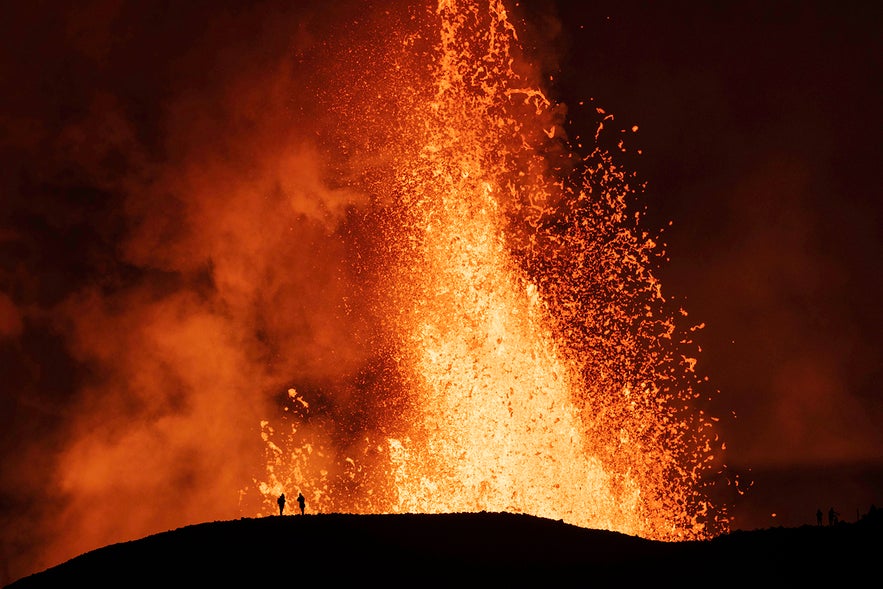 Fortunately, the recent Fagradalsfjall Volcano was mostly on the harmless side. Despite its menacing appearance and the Mordor-like landscape surrounding the eruption site, it did not pose a threat to life, infrastructure, or air travel.
Fortunately, the recent Fagradalsfjall Volcano was mostly on the harmless side. Despite its menacing appearance and the Mordor-like landscape surrounding the eruption site, it did not pose a threat to life, infrastructure, or air travel.
The main reason Fagradalsfjall Volcano was not considered dangerous was that the eruption was an effusive eruption rather than an explosive one. This means the lava did not burst from the Earth's crust in an explosion of ash and fire like Eyjafjallajokull. Rather, the lava that emerged from the volcanic fissure in Meradalir valley did so at a steady rate, forming molten rivers of lava.
It also helps that the eruption took place in an isolated valley where it couldn't harm human settlements or infrastructure. Rest assured, Iceland remains a safe destination for travelers eager to explore its natural beauty and volcanic landscapes.
2021 Eruption of Fagradalsfjall Volcano
The 2021 eruption of Fagradalsfjall marked a historic event, being the first eruption on the Reykjanes Peninsula in 800 years and the first from Fagradalsfjall in 6,000 years. Following over a year of seismic activity, the eruption began on March 19, 2021, in Geldingadalir Valley, about 24.85 miles (40 kilometers) from Reykjavik.
The 2021 eruption at Fagradalsfjall was a steady flow of lava, not an explosive event, making it safe for locals and travelers. The eruption started with a long crack in the ground, and over six months, the lava slowly flowed out, creating a stunning display.
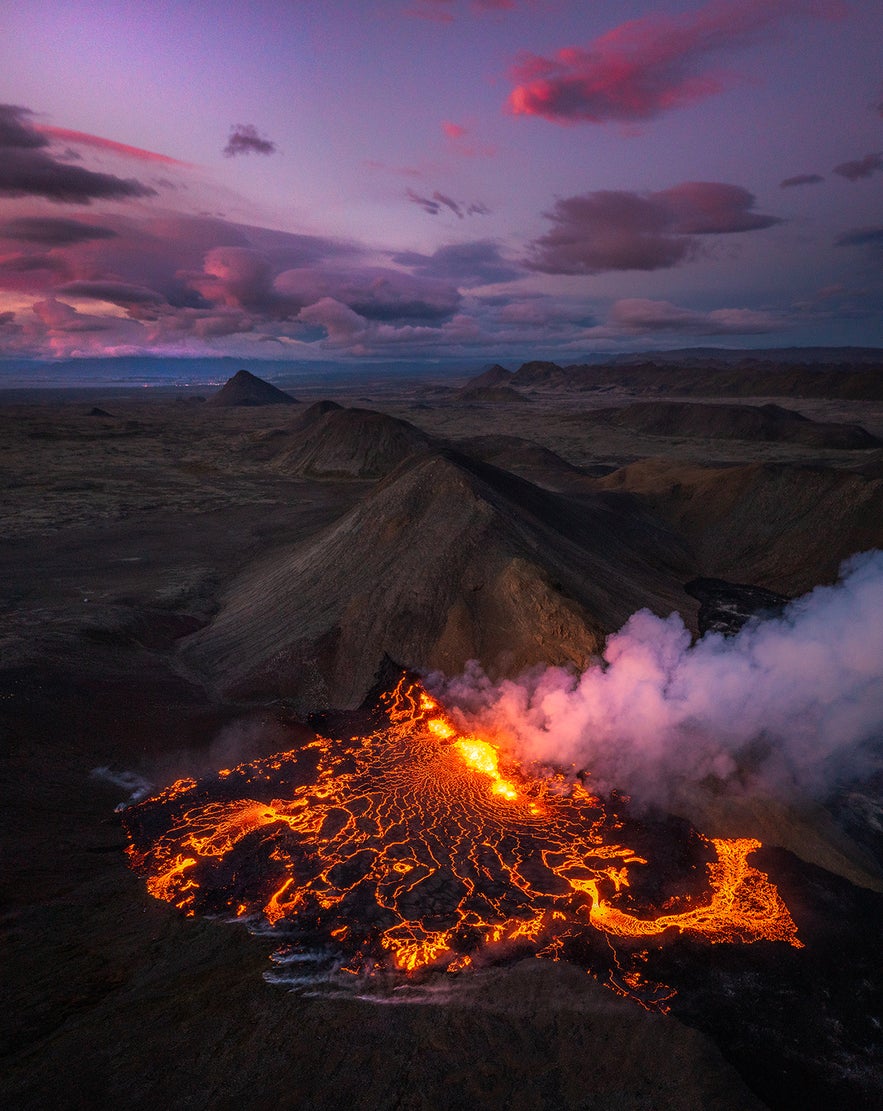 As the lava spread, it covered an area of 1,140 acres (460 hectares), changing the landscape dramatically. The eruption lasted until September 18, 2021, with some pauses in between, making it one of the longest eruptions in Iceland in recent years. The eruption was accessible and relatively safe for tourists, offering a chance to safely watch the volcano’s activity up close.
As the lava spread, it covered an area of 1,140 acres (460 hectares), changing the landscape dramatically. The eruption lasted until September 18, 2021, with some pauses in between, making it one of the longest eruptions in Iceland in recent years. The eruption was accessible and relatively safe for tourists, offering a chance to safely watch the volcano’s activity up close.
The eruption surprised locals and scientists, starting quietly before growing in intensity. Its accessibility from Reykjavik and safe viewing conditions made it a popular spot for tourists to experience volcanic activity up close, attracting photographers and volcanology enthusiasts alike.
The 2021 Fagradalsfjall eruption had little impact on local infrastructure, but it significantly boosted tourism, transforming the region into a geological landmark and a must-see destination for both visitors and scientists.
Exploring the Fagradalsfjall Volcano: Trails and Access
In this section, you’ll learn how to reach Fagradalsfjall Volcano and explore its eruption sites. Whether you’re hiking along the lava trails or soaring above the landscape in a helicopter, this guide will help you experience the power of Iceland’s volcanic activity up close and safely.
How do I get to Fagradalsfjall Volcano?
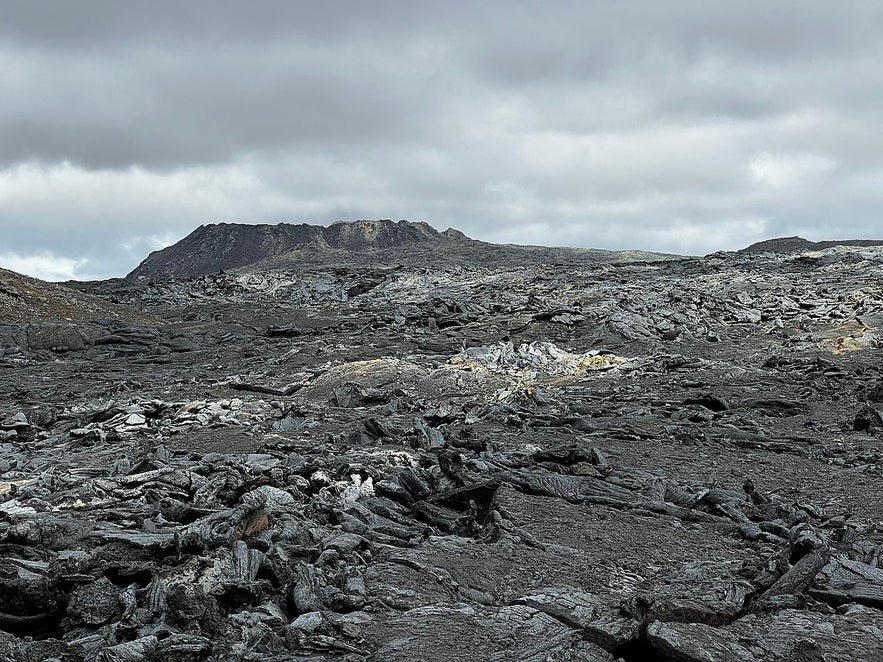
Photo from Wikimedia, Creative Commons, by Stefan mohanu. The crater and aftermath of the 2021 Fagradalsfjall eruption.
Fagradalsfjall has been quite visitor-friendly, as far as volcanoes go, for those wanting to experience the aftermath of Earth's raw power up close. It's located in Meradalir Valley on Reykjanes Peninsula, about 7 miles (11 kilometers) from the fishing town of Grindavik, not too far from the famous Blue Lagoon Spa. It's also just 20 miles (32 kilometers) from the capital city of Reykjavik, making it very accessible for most.
Since no roads lead directly to the eruption site in Meradalir Valley, the first step is to get to the Fagradalsfjall parking lots. You can either stop at "Parking 1" or "Parking 2", both marked by nearby road signs, and you can get to them from Route 427. The parking area is about a 1-hour drive from Reykjavik.
New Hiking Trails: Path A, Path B, and Path E
The Fagradalsfjall area is partially open now, with new hiking paths established for those eager to explore the eruption sites. While some areas remain closed due to ongoing volcanic activity in nearby regions like Sundhnuksgigar, you can now access designated trails when the area is declared safe. Please be sure to check safety updates before planning your visit.
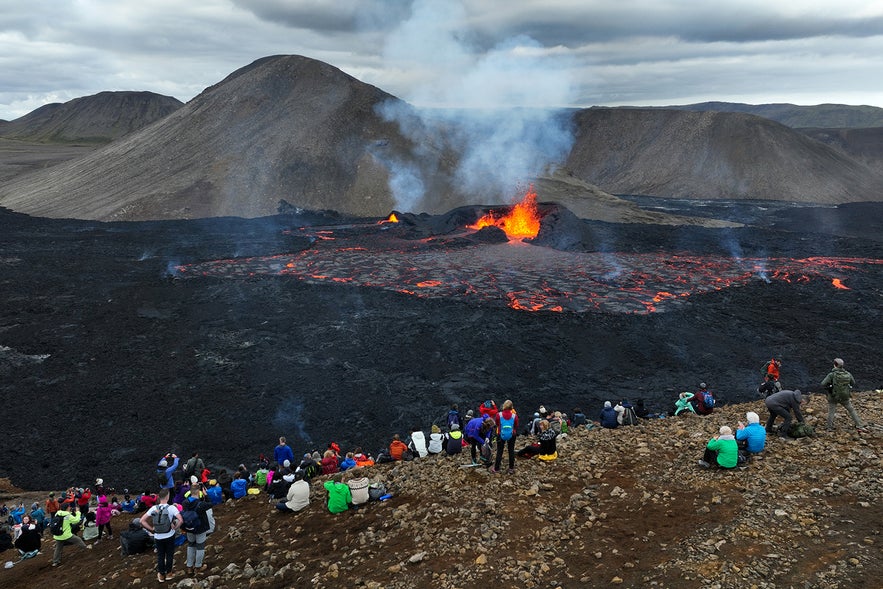
When the area is safe to enter, there are several paths to explore the eruption sites and witness the stunning effects of the volcanic activity.
Parking 1 is the best starting point for most visitors. From here, Path A will take you on a hike through the solidified lava from the 2021 eruption, leading all the way to the newer 2022 lava flow. This path offers incredible views of the transformation the land has undergone due to the eruptions.
For those looking to explore the Sundhnuksgigar eruption site, Path B also starts at Parking 1. This trail provides a fantastic vantage point for viewing the craters and lava flows that resulted from the eruptions, offering a more expansive view of the area’s volcanic activity.

If you're up for a more challenging hike, Path E leads to the Litli-Hrutur eruption site. This trail covers a round trip of 11 to 12.4 miles (18 to 20 kilometers), requiring a good fitness level. It's a longer and more challenging hike compared to the 9-mile (14-kilometer) route to the older eruption sites, which usually takes about 4 hours to complete, not including time spent enjoying the view at the volcanic site.
No matter which path you choose to explore, it requires a decent fitness level and good equipment, especially with unpredictable weather and ever-changing conditions.
Helicopter Tours and Other Viewing Options
If you’re looking for a safe and exciting way to see the eruption sites, helicopter tours are a fantastic option. These tours offer a bird’s-eye view of the volcano and its surrounding landscape, giving you the opportunity to experience the raw power of the eruption from a distance.
Helicopter tours are especially ideal if some trails are still inaccessible or if you're simply looking for a different perspective of the volcanic activity.
For those who prefer to be on the ground, joining a guided volcano hiking tour is a great choice. Expert guides will ensure you navigate the challenging terrain safely while exploring the recent eruption sites.
You’ll also have the chance to visit other incredible landmarks on the Reykjanes Peninsula, making it a well-rounded volcanic adventure.
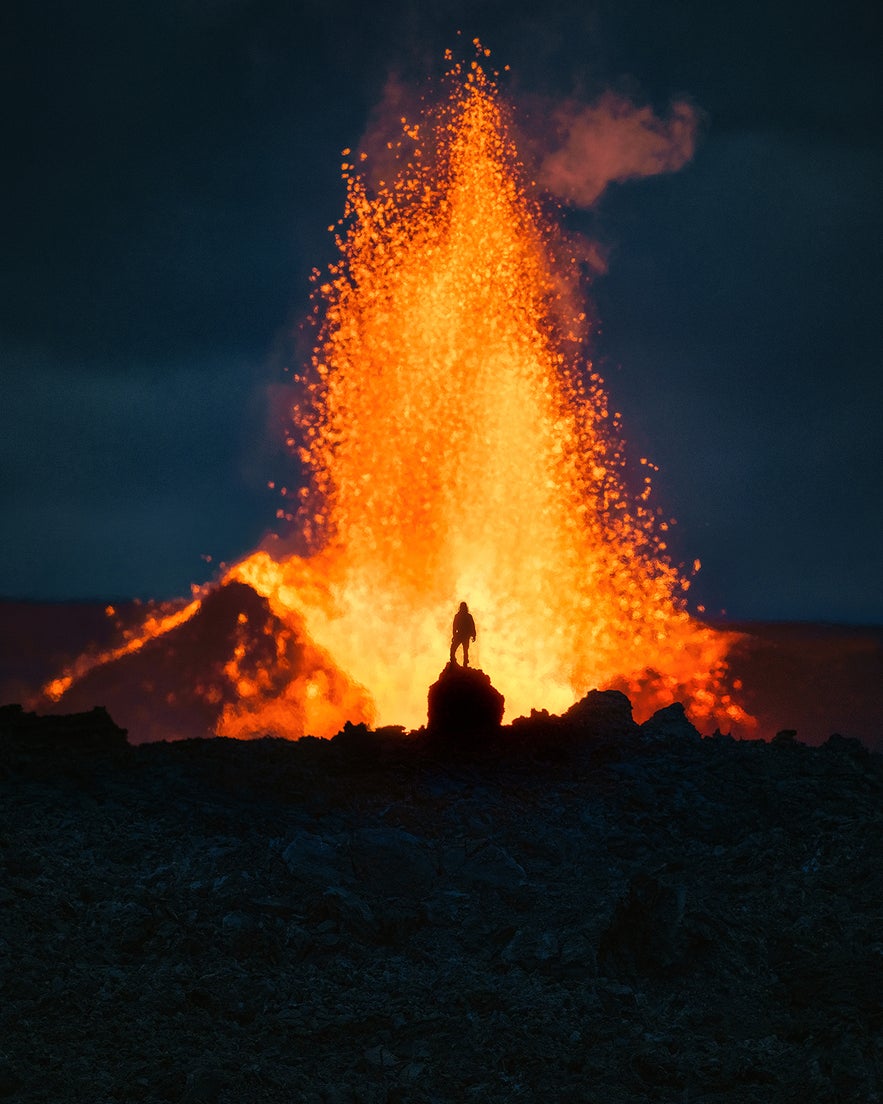 Despite the eruption ending on August 21st, 2022, the lava can still be very hot under the surface, and visitors should heed caution when going near it. It will take many years before it's safe to walk on.
Despite the eruption ending on August 21st, 2022, the lava can still be very hot under the surface, and visitors should heed caution when going near it. It will take many years before it's safe to walk on.
For your safety, always check the Loftgaedi website for air pollution status and be sure to check the SafeTravel website and the VisitReykjanes website for detailed information before visiting.
Local search and rescue teams were called out a few times during the previous eruptions to help exhausted or injured travelers get off the mountain trail, so it's always better to be on the safe side. Please respect the closure and show consideration to the rescue volunteers who help authorities monitor the site.
- See also: Dumbest Things to Do in Iceland
What should I pack when visiting Fagradalsfjall Volcano?
First and foremost, check SafeTravel to see if the area has been opened for visitors. If it's not open, do not attempt to enter any of the eruption sites.
If the area has been opened, make sure you have good hiking boots with ankle support when you go hiking to the volcano. To reach the most recent eruption site, it's expected that you'll have to hike through a difficult lava field covered with hidden cracks that can be dangerous and even life-threatening.
The trails to previous eruptions are also very rocky and slippery, with a decent incline. Since this is Iceland, the weather can change on a dime, so always be prepared for wind and rain, even if it's nice and sunny outside. If you're visiting Iceland in winter, preparation is extremely important, as it's generally not recommended to go on long hiking trips during the colder months in Iceland.
It's important to bring warm layers and a waterproof jacket so you're prepared for anything. Since the hike can take several hours, it's also necessary to bring plenty of water to drink along the way. You'll probably get hungry at some point since you'll be burning plenty of calories, so it's a good idea to bring snacks like skyr and sandwiches.
Of course, you'll want the memories of this incredible experience to last a lifetime, and therefore, you'll need to take plenty of amazing photos of the eruption site. Smartphone cameras do a decent job, but they don't do the volcano justice.
If you have one, make sure to bring an SLR camera with a zoom lens to capture the magic of Iceland's seismic activity up close. If you don't have a camera with a zoom lens, it's not a bad idea to bring binoculars so you can see the new crater in as much detail as possible.
If you're planning on flying drones around the volcano, read this article about flying drones in Iceland to make sure you're following regulations regarding drones.
The list of things you should bring for your volcano trip includes:
-
Hiking boots with ankle support
-
Warm and breathable layers of clothes (preferably not cotton)
-
Waterproof jacket
-
Warm socks
-
Gloves or mittens
-
Warm headgear
-
Fully charged phone
-
Water bottle
-
Small snack
-
Trash bag
-
SLR Camera
-
Binoculars
It bears mentioning that since the volcano is located in Iceland's wilderness, there is no infrastructure near the volcano! That means there are no food services, no toilets, and no trash cans along the way. Keep that in mind before you start your journey toward the volcano.
- See also: Photography in Iceland
Is it safe to go visit the Fagradalsfjall Volcano?
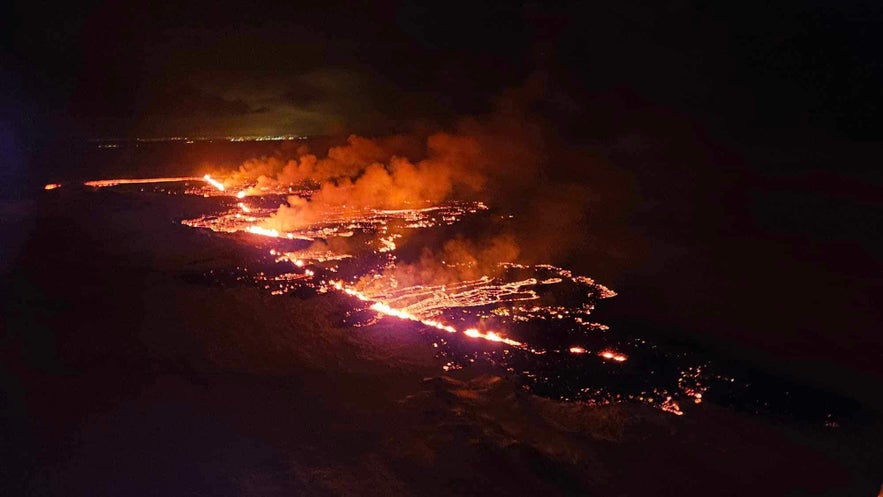
The first eruption of Sundhnukagigar on December 18th 2023.
Yes, it is safe to visit certain areas of the Fagradalsfjall Volcano, but only when they are officially declared accessible. Since eruptions are a natural phenomenon, conditions can change rapidly. With that in mind, it’s important to check for updates before your visit, as some areas may be temporarily closed due to ongoing volcanic activity or safety concerns. Be sure to check the Loftgaedi website for air pollution status and the SafeTravel website for the latest travel advisories before heading out.
The area around Sundhnuksgigar remains closed due to ongoing volcanic activity, including the Fagradalsfjall and Litli-Hrutur eruption sites. However, new hiking paths have been established in some areas and are accessible when safety conditions permit.
When visiting the volcano, always take necessary precautions. Even in older eruption sites, the solidified lava can still be hot beneath the surface, posing a burn risk if you get too close. Stick to the marked trails and maintain a safe distance from the lava.
Be aware of gases that may be released from the lava, especially when the wind changes direction. It’s a good idea to wear a gas mask for added protection. Make sure the wind is at your back and stay clear of the lava, as the surface may seem solid but could still have hot spots underneath.
- See also: Iceland's Volcanoes: The Complete Guide
Information about Fagradalsfjall and Reykjanes Peninsula
Fagradalsfjall volcano ("Beautiful valley mountain") is located on Reykjanes peninsula in the southwest of Iceland. The peninsula is considered relatively "young" in geological terms. It was formed by magma rising from the core of the earth over just the past seven million years. For comparison, the oldest parts of Iceland, located in the Westfjords, are 16 million years old.
Altogether, Iceland is actually a very young land mass when you consider that some of the oldest land in Western Australia is estimated at over 4 billion years old. This makes Reykjanes peninsula a fresh-faced youngster compared to the rest of the world.
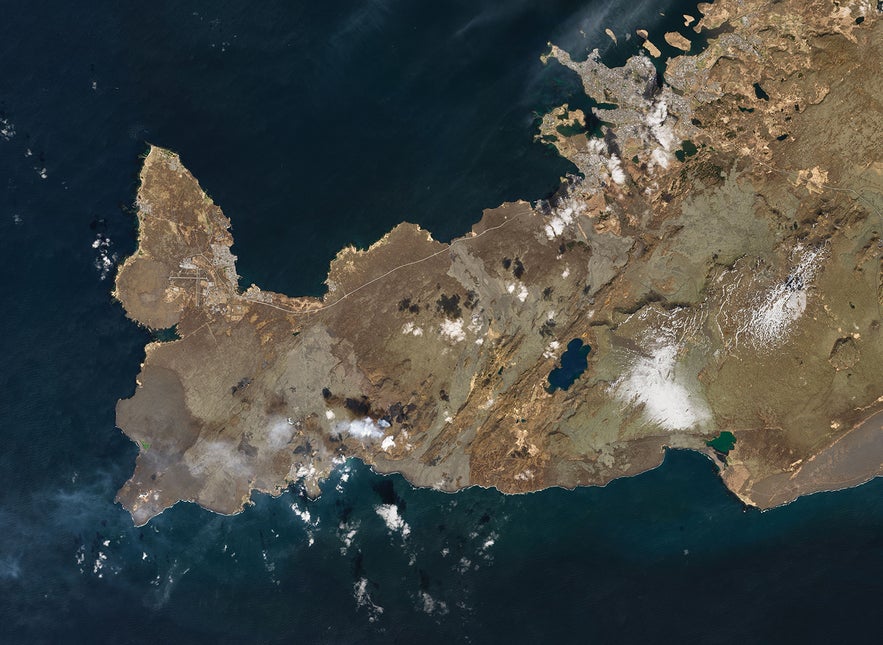
Photo by NASA Earth Observatory, from Wikimedia Commons Library. No edits made.
With its location on the Mid-Atlantic Rift, where the North American and Eurasian tectonic plates meet, the Reykjanes peninsula is very volcanically active. This activity is quite evident in its landscapes. Very little vegetation, aside from moss, can grow on the endless plains of lava rocks. Cone-shaped volcanoes, whether dormant or active, dominate the horizon.
The region is also home to the "Bridge Between the Continents," where you can walk across the Mid-Atlantic Rift from one tectonic plate to the other.
Photo by Ralf Roletschek, from Wikimedia Commons Library. No edits made.
On March 19th, 2021, Fagradalsfjall volcano erupted after 53,000 tremors had shaken the surrounding area, including Reykjavik, for weeks. This was the first time Fagradalsfjall volcano had erupted in 6,000 years and the first volcano in Iceland to erupt since Holuhraun volcano in 2015. The magma chamber had lain dormant for thousands of years, making it among the oldest lava to have emerged in Iceland in a long time.
The eruption took place in Geldingadalur valley ("Valley of Geldings"), just about 0.6 miles (1 kilometer) from the second eruption in Meradalir valley ("Valley of Mares"). The volcanic fissure that opened up in the valley was 700 meters long and was fiercely active right from the start.
The volcanic eruption became an immediate sensation, with people rushing to the eruption site to see it in person. Despite geologists warning people for decades that an eruption in Reykjanes was due, most people were not expecting it. However, when the citizens of Reykjavik could see the sky turn red in the distance from their window, they wanted to see what the hubbub was about.
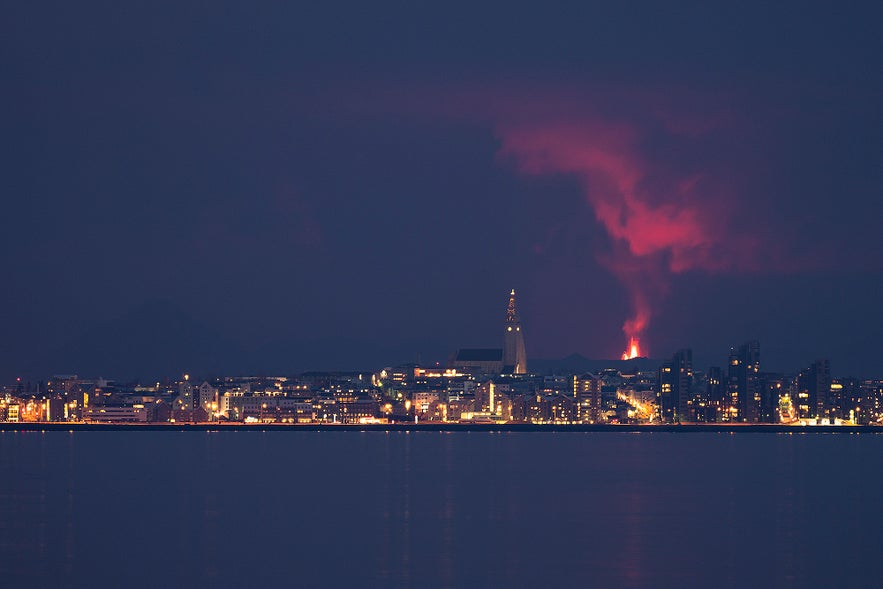 In recent times, the volcanism of the Reykjanes peninsula has drawn more travelers to the region, with various Reykjanes tours available. Places such as the ruins of Selatangar, the hot springs of Gunnuhver, and the unique geothermal pool of Brimketill have all increased in popularity since the volcano erupted. Perhaps the best example of the earthly power that lurks underneath the peninsula is the geothermal area of Krysuvik, with its steaming vents and bubbling hot mud pots.
In recent times, the volcanism of the Reykjanes peninsula has drawn more travelers to the region, with various Reykjanes tours available. Places such as the ruins of Selatangar, the hot springs of Gunnuhver, and the unique geothermal pool of Brimketill have all increased in popularity since the volcano erupted. Perhaps the best example of the earthly power that lurks underneath the peninsula is the geothermal area of Krysuvik, with its steaming vents and bubbling hot mud pots.
You can explore the wonders of Reykjanes peninsula on this unique 8-hour minibus tour of Reykjanes that will take you to all the main attractions. If you're looking for something thrilling, you can also go on an exciting 1-hour Panoramic Buggy Tour on Reykjanes peninsula, allowing you to traverse the landscape as if you were driving on the moon.
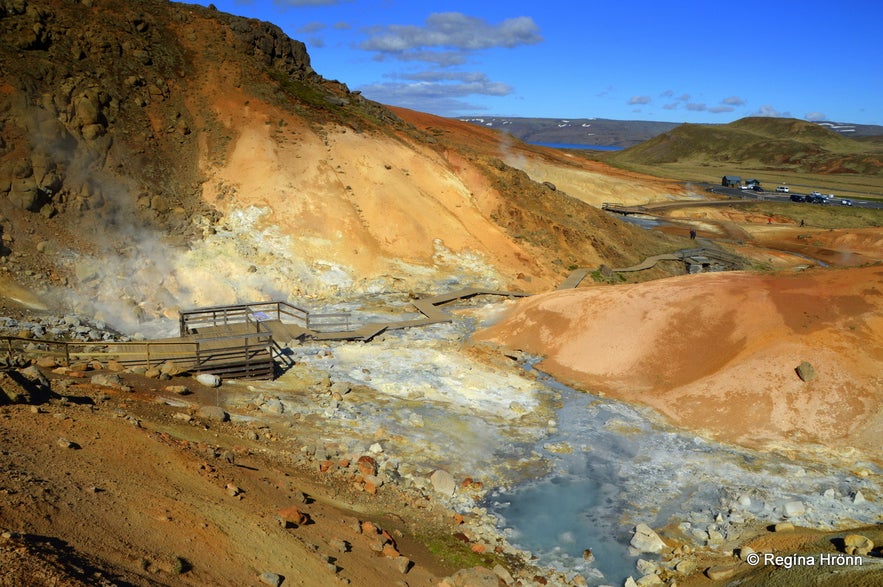
Photo from Wikimedia Commons Library. No edits made.
It was the worst plane crash in Iceland's history at the time, and 14 of the 15 passengers on board tragically lost their lives. Among those who died was Lieutenant General Frank Andrews, the highest-ranking Allied officer to die in the line of duty at that point in the war.
In 2018, 75 years after the tragic accident, a monument was raised close to Fagradalsfjall that was dedicated to the memory of the victims of the crash. In 2023, it was moved because of the eruptions in the area and can now be found by the intersection of the Reykjanesbraut and Grindavikurvegur roads.
Future of Volcanic Activity: Will Fagradalsfjall Erupt Again?
That question is difficult to answer without the ability to see the future. Just like Iceland's weather, the seismic activity of Iceland is unpredictable. Fagradalsfjall volcano had not erupted for over 6,000 years before 2021, but has since erupted three years in a row.
In 2022, the Fagradalsfjall eruption lasted for just about three weeks. However, the eruption of 2021 lasted for a total of six months. During the eruption period, there were a lot of ebbs and flows along the way. Sometimes the eruption lulled, and lava output was very low for a few days or weeks, but then the activity would resume dramatically with significantly more lava. The rate of lava flowing from the volcano ranged from one cubic meter per second up to 50 cubic meters per second.
As for the eruption near Litli-Hrutur, it lasted for about a month, coming to an end on August 5th. Between 2023 and 2025, Iceland experienced a series of short but frequent eruptions in and around Sundhnukagigar, often occurring just months apart. The most recent eruption on July 16th, 2025, marked the twelfth volcanic event on the Reykjanes Peninsula since 2021.
There is still a risk of further activity or other fissures opening in the vicinity, though only time will tell if more eruptions will take place in the future.
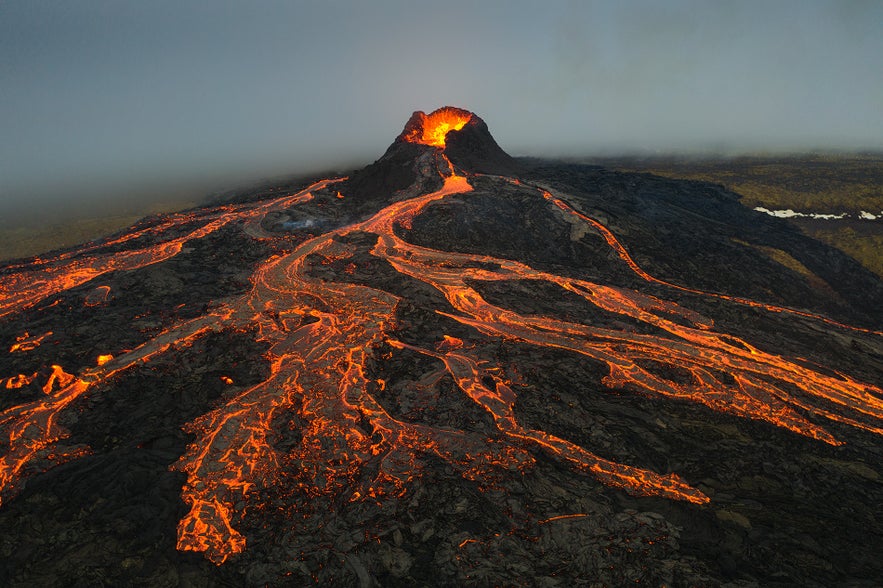 Geologists speculate that more volcanic activity will take place in the coming years somewhere on the Reykjanes peninsula, but not necessarily in the same area around Fagradalsfjall.
Geologists speculate that more volcanic activity will take place in the coming years somewhere on the Reykjanes peninsula, but not necessarily in the same area around Fagradalsfjall.
It's far from the only volcano on the peninsula, and the volcanic system underneath the peninsula seems to have recently woken up from a long slumber. If you want to make sure to see it with your own eyes when it happens, keep a close eye on Guide to Iceland for all volcano-related news and experiences!
Experiencing Fagradalsfjall Safely
Iceland’s volcanic landscape offers unparalleled natural beauty and excitement, but it’s essential to prioritize safety. By following official guidelines, staying informed about current conditions, and adhering to the safety measures in place, visitors can enjoy a thrilling experience at sites like Fagradalsfjall with peace of mind.
Iceland continues to be a fantastic destination, offering a unique blend of stunning scenery, outdoor adventure, and warm hospitality. You can explore the island’s volcanic wonders with confidence, knowing that your safety is a top priority.
Are you planning to go see the Fagradalsfjall volcano? Did you see the eruption in 2022? If so, how was it? Is there anything you would recommend for travelers planning to go there in the future? Let us know in the comments below!

